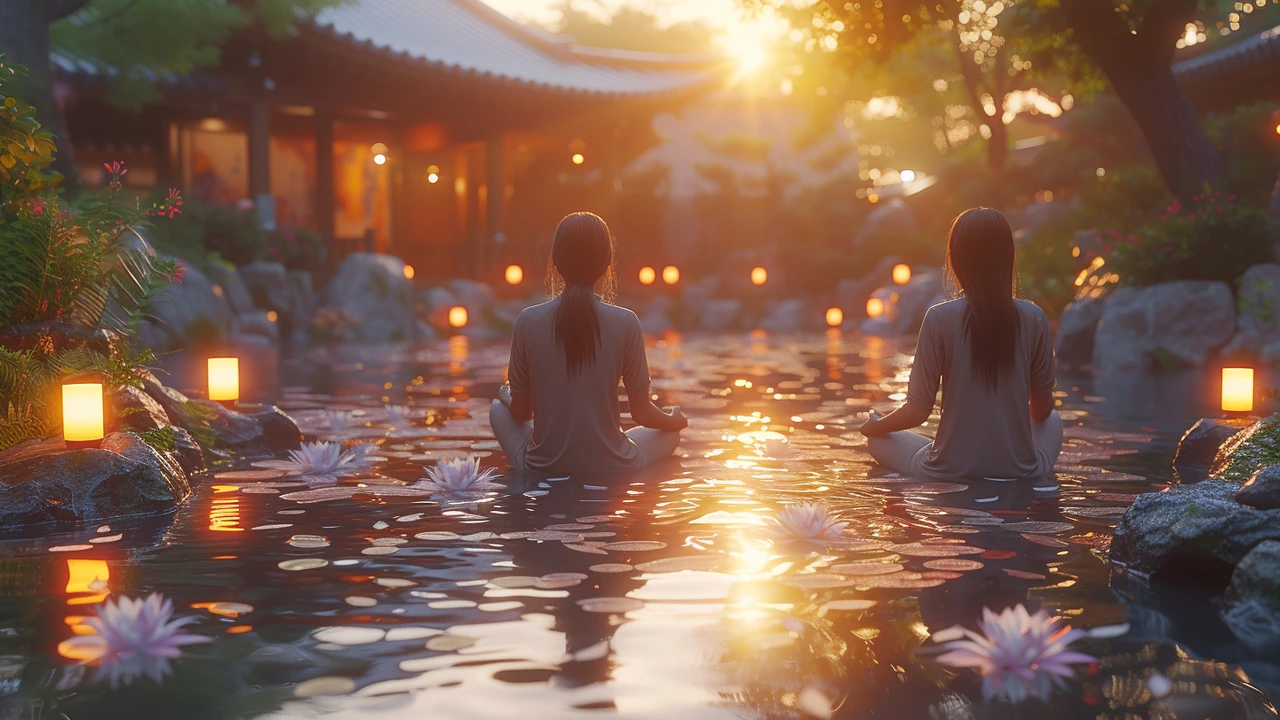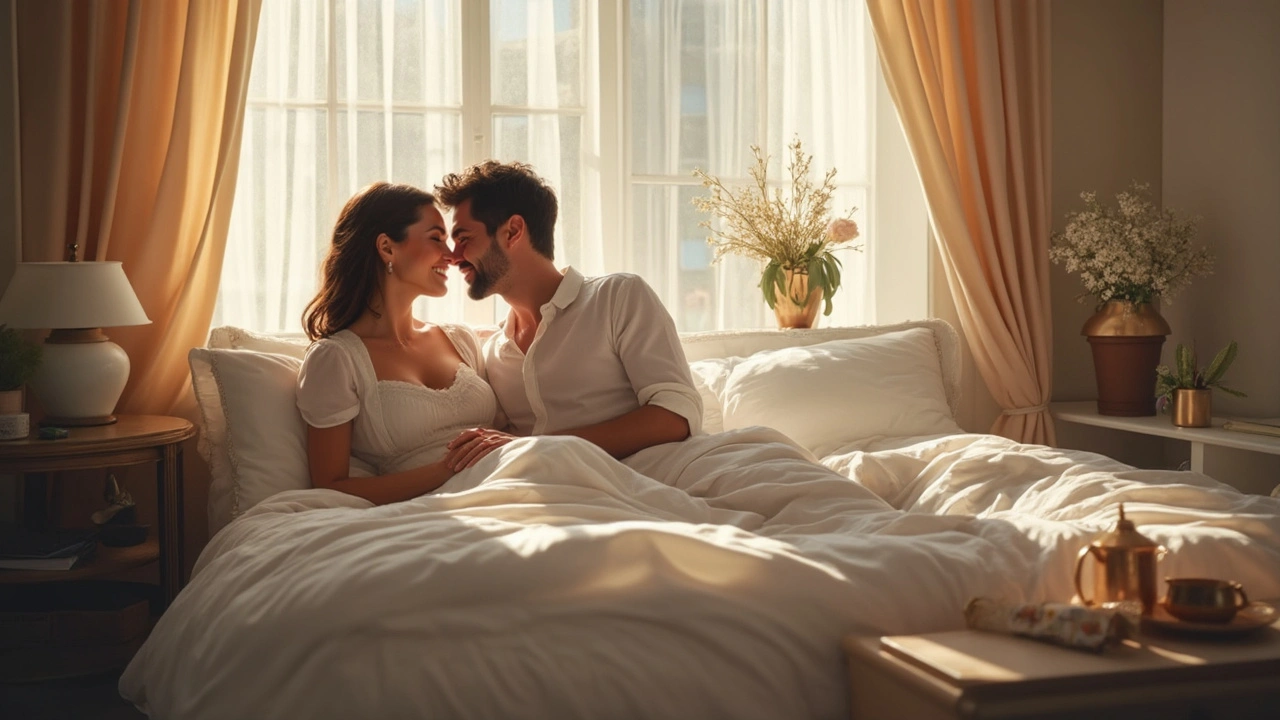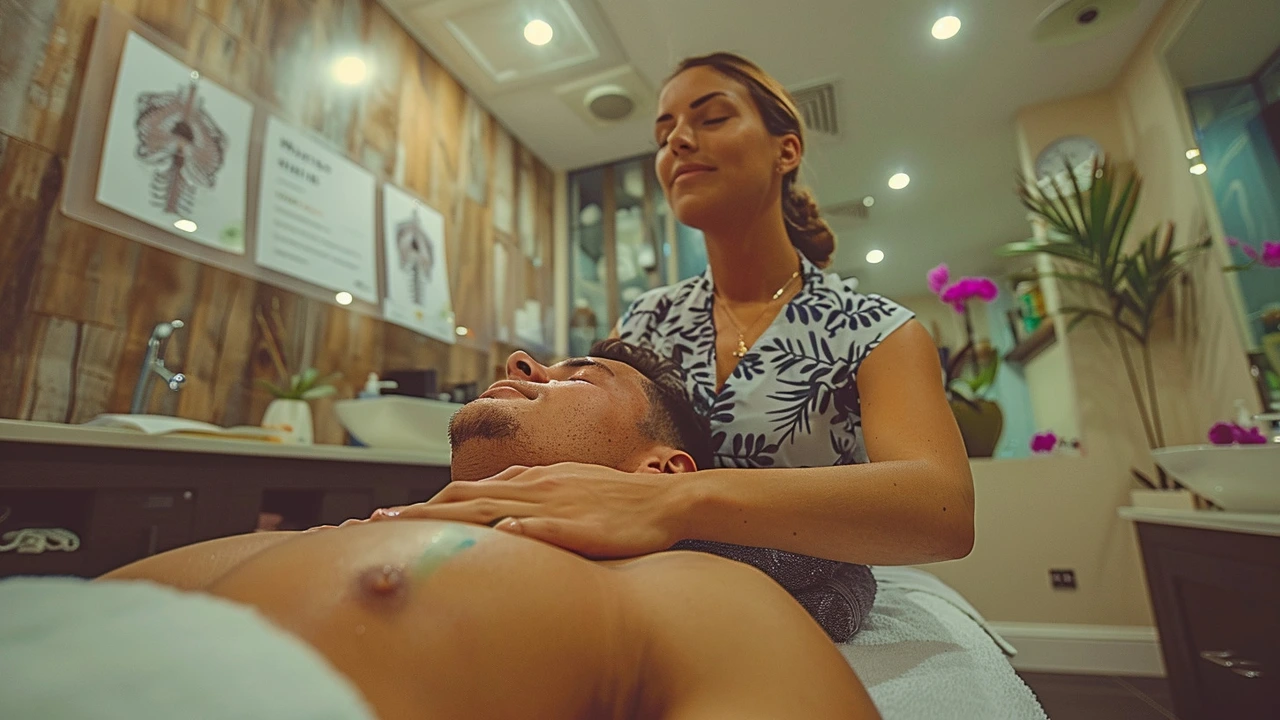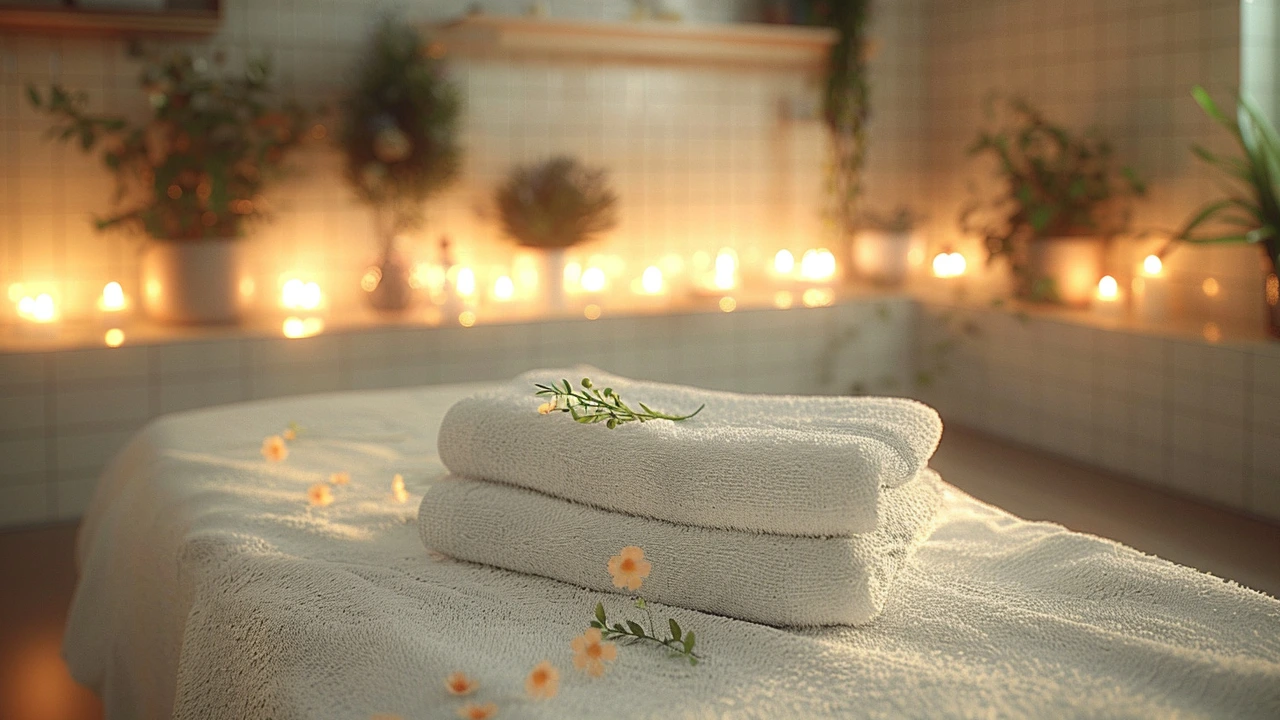Laos Massage: A Journey from Tradition to Modern Healing
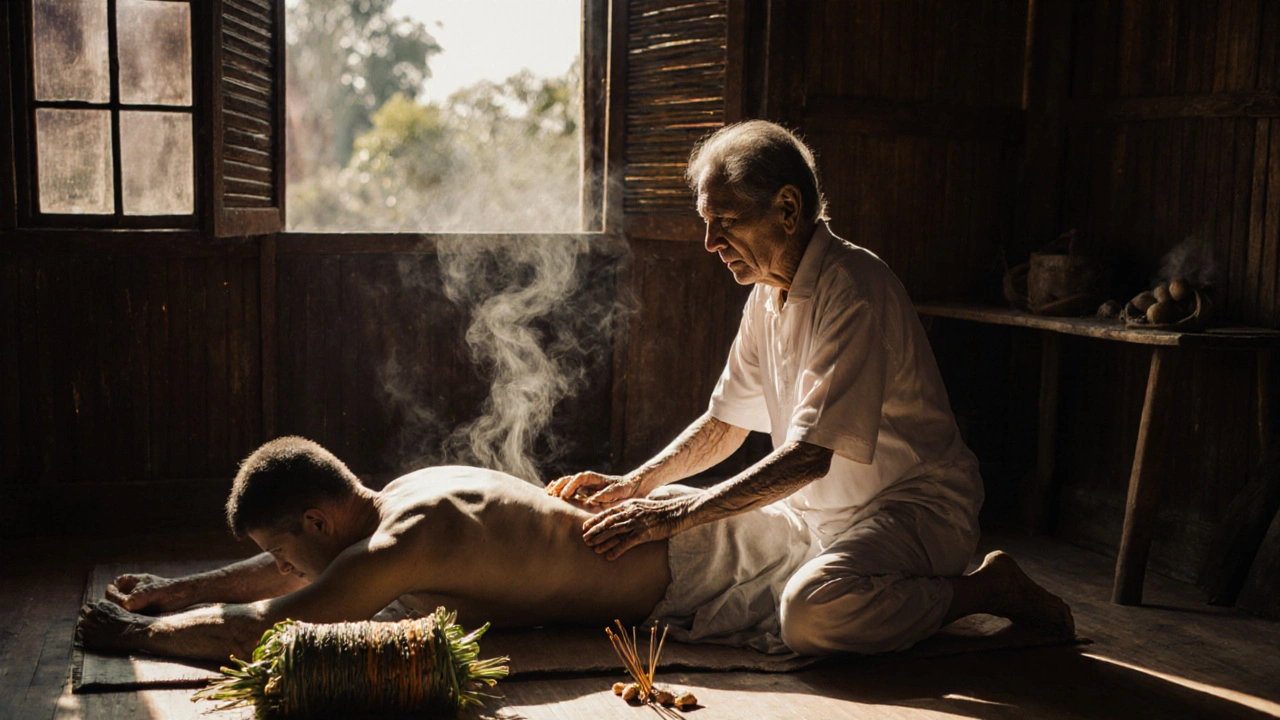
When you think of massage, you might picture a quiet spa in Bangkok or a busy street-side stall in Bali. But in Laos, massage isn’t just a service-it’s a living tradition passed down through generations, wrapped in spiritual rituals, herbal wisdom, and slow, deliberate hands. Unlike the fast-paced, pressure-heavy techniques you’ll find elsewhere, Lao massage is about harmony: between body and breath, between healer and client, between past and present.
The Roots of Lao Massage
Lao massage, or nuad phaen boran, comes from the same ancient lineage as Thai massage, but it’s quieter, gentler, and deeply tied to Buddhist healing practices. It doesn’t rely on oils or loud music. Instead, it uses rhythmic compression, acupressure, and assisted yoga-like stretches-all done with the client fully clothed.
Monks in Luang Prabang were among the first to practice this form of healing. They used massage not just to relieve pain, but to balance energy lines called sen, similar to Chinese meridians. These lines run through the body, and when blocked, they cause discomfort. A skilled Lao therapist doesn’t just push muscles-they follow these energy pathways, finding where tension lives and releasing it with slow, grounded pressure.
Herbs play a big role too. The luuk prai, or herbal compress, is a signature of Lao healing. These are balls made from cotton cloth, stuffed with turmeric, lemongrass, kaffir lime leaves, ginger, and tamarind, then steamed until warm. The therapist rolls them over the back, shoulders, and legs. The heat opens pores, the steam carries healing compounds into the skin, and the scent calms the nervous system. People in rural villages still make these compresses by hand, using recipes passed from mother to daughter.
How It’s Done-No Tables, No Oils
There’s no fancy massage table here. You lie on a low mat on the floor, usually in a cool, shaded room with the scent of incense hanging in the air. The therapist sits beside you, barefoot, and begins without a word. No need for a consultation. They watch your posture, feel your tension, and start where your body needs it most.
The session lasts 60 to 90 minutes. You’re never left alone. The therapist moves with intention: thumbs press along the spine, palms glide down the legs, knees gently guide your hips into stretch. There’s no cracking of joints. No sudden movements. It’s like being held by someone who knows exactly how heavy your soul feels.
Unlike Thai massage, which can be intense and athletic, Lao massage is more meditative. It’s not about pushing through pain-it’s about inviting relaxation. People come not just for sore muscles, but for stillness. For a break from the noise of modern life.
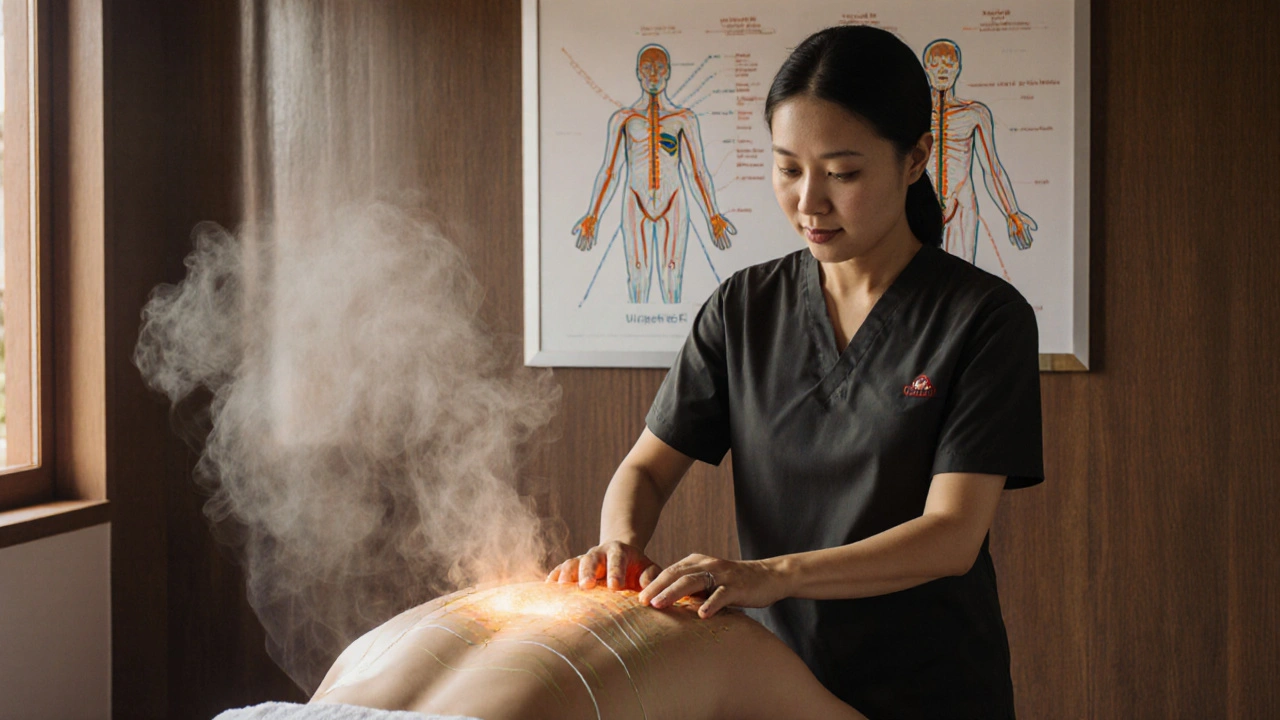
Modern Adaptations-Keeping Tradition Alive
In Vientiane and Luang Prabang, you’ll now find clinics that blend Lao massage with Western physiotherapy. Some therapists have studied anatomy in Thailand or Australia. They still use the herbal compresses and sen lines, but now they also understand muscle groups, nerve pathways, and inflammation. They can tell you if your lower back pain comes from tight hamstrings or a misaligned pelvis.
These modern Lao therapists work with physical therapists, chiropractors, and even hospital rehab units. One clinic in Luang Prabang partners with a local university to study how herbal compresses affect cortisol levels. Early results show a 28% drop in stress hormones after one session-comparable to mindfulness meditation.
But not everyone is embracing change. In remote villages, elders still teach apprentices the old way: no written manuals, no certifications, just years of watching, doing, and listening. Some say the modern version loses the soul. Others say it’s the only way the tradition survives.
What You’ll Feel After
Right after a Lao massage, you’ll feel heavy-like your body is sinking into the floor. Your limbs might feel warm, your breath deeper. It’s not the buzz of a deep tissue session. It’s a quiet hum, like the sound of a temple bell fading in the distance.
Most people report better sleep that night. Less stiffness the next day. Some say their headaches disappear. One woman from Melbourne, who came to Laos after years of chronic back pain, told me she hadn’t slept through the night in seven years. After three sessions with a village therapist, she started waking up without pain. She didn’t take a single pill.
The effects aren’t magic. They’re biological. The pressure stimulates the parasympathetic nervous system-the part of your body that says, “It’s safe to relax.” The herbs reduce inflammation. The stretching improves circulation. And the silence? That’s the real medicine.

Where to Find Authentic Lao Massage Today
If you’re traveling to Laos, skip the tourist traps in Vientiane’s shopping malls. Head to the old quarter of Luang Prabang. Look for small wooden houses with no signs, just a mat outside and the smell of steaming herbs. Ask locals where the monks used to give massages. That’s where you’ll find the real thing.
Some places to try:
- Wat Mai Temple Massage - Run by retired monks, open mornings only. No prices listed-you pay what you feel is fair.
- Laos Healing House - A modern clinic in Luang Prabang with certified therapists trained in both traditional and anatomical methods.
- Phonsavanh Village - A remote village in the north where grandmothers still make herbal compresses using wild-gathered plants. You’ll need a guide to get there.
Prices range from $5 to $15 USD, depending on location. In tourist areas, you might be quoted more-but always ask for the local price. Most therapists will laugh and say, “For you, same as for my cousin.”
Why It Matters Beyond the Spa
Lao massage isn’t just about feeling good. It’s a quiet act of cultural resistance. In a world where everything is fast, loud, and commercialized, Lao massage says: healing doesn’t need a brand. It doesn’t need a patent. It doesn’t need to be expensive.
It’s about hands that know how to listen. About herbs grown in backyards. About silence that speaks louder than any advertisement.
When you get a Lao massage, you’re not just getting a treatment. You’re stepping into a rhythm older than capitalism, older than tourism, older than the borders that now divide Southeast Asia. And for a little while, you’re part of it.
Is Lao massage the same as Thai massage?
No. While both come from the same ancient roots, Lao massage is slower, gentler, and less focused on deep stretching. Thai massage often involves more forceful movements and may use oils. Lao massage is done fully clothed, uses herbal compresses, and follows energy lines called sen with quiet, meditative pressure. It’s more about balance than intensity.
Do I need to be naked for Lao massage?
No. Lao massage is always done with clothes on. You’ll wear loose, comfortable clothing-usually provided by the therapist. The technique relies on pressure and stretching through fabric, not skin-to-skin contact. This makes it appropriate for all ages and cultural backgrounds.
Are herbal compresses safe for people with sensitive skin?
Yes, generally. The herbs used-lemongrass, turmeric, ginger-are natural and anti-inflammatory. Therapists test the temperature of the compress before applying it and avoid areas with open wounds or severe rashes. If you have known allergies to any of these plants, mention it before the session. Most clinics will adjust the blend or skip the compress entirely.
Can Lao massage help with chronic pain?
Many people with chronic back, neck, or joint pain find relief. The combination of acupressure, gentle stretching, and herbal heat reduces inflammation and improves mobility. Studies from Laos and Thailand show consistent results for conditions like arthritis and sciatica. It’s not a cure, but it’s a powerful tool for managing pain without drugs.
How often should I get a Lao massage?
For general wellness, once a month is enough. If you’re dealing with stress, tension, or pain, twice a week for 2-4 weeks can make a noticeable difference. After that, maintenance once every 2-4 weeks keeps the benefits going. Unlike deep tissue or sports massage, Lao massage is gentle enough for frequent use.
Can I learn Lao massage outside Laos?
Yes, but it’s rare. Some schools in Thailand, Australia, and the U.S. offer short courses in traditional Lao techniques. Look for instructors who trained directly in Laos, especially in Luang Prabang or Vientiane. Avoid programs that mix it with Thai or Swedish massage-authentic Lao massage is its own system, with its own rhythm and philosophy.

